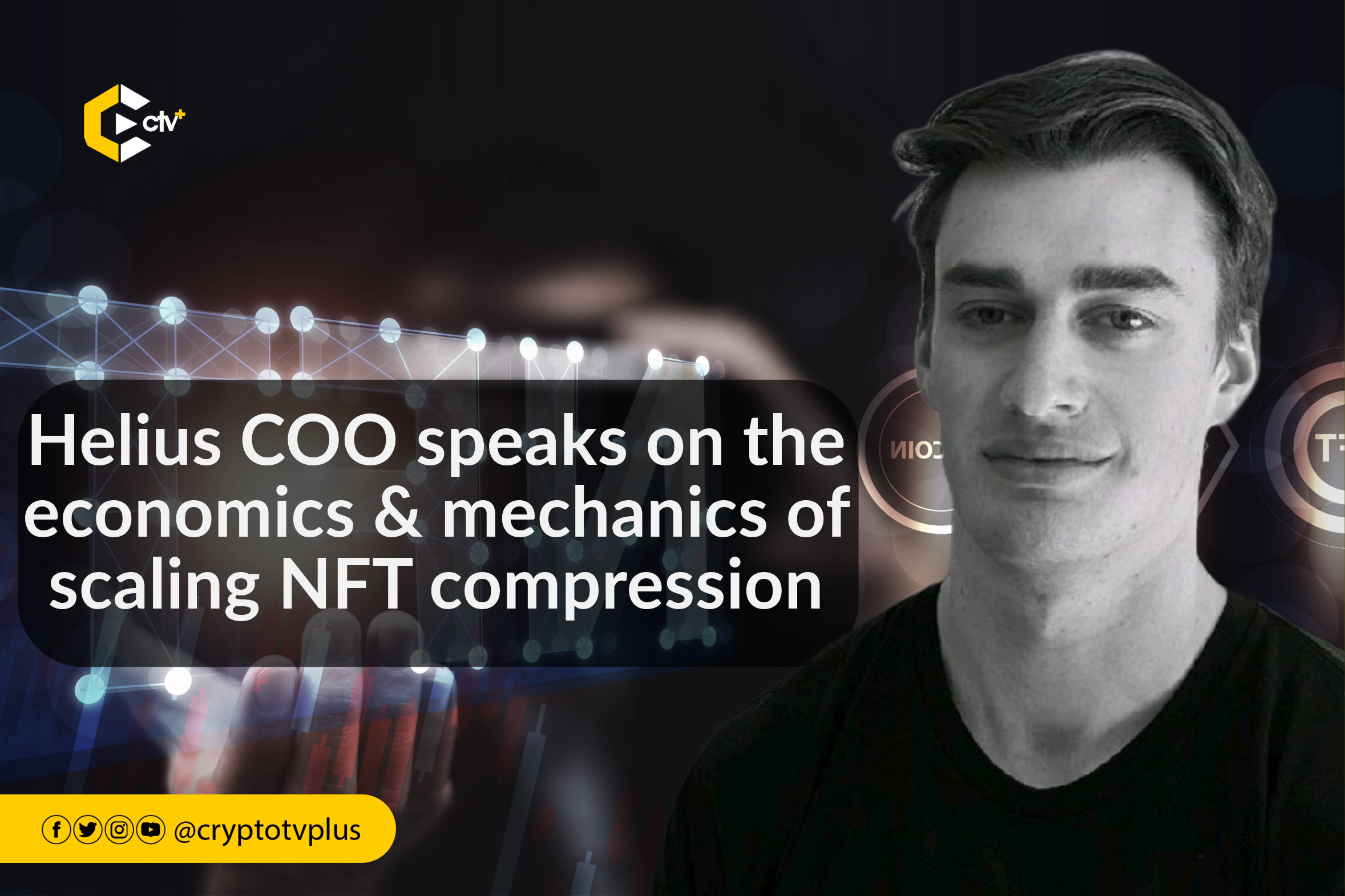FEATURED
Helius COO speaks on the economics & mechanics of scaling NFT compression

In recent years, non-fungible tokens (NFTs) have gained significant popularity as a means of representing unique digital assets on the blockchain.
However, the current state of the Ethereum network lacks scalability to accommodate the growing demand for NFTs. As a result, users experience high gas fees and slower transaction times.
To tackle this challenge, several NFT scaling solutions have been proposed and developed, including NFT compression infrastructures.
Ensuring scalability is paramount for the widespread adoption of NFTs across various industries, such as gaming, art, and collectibles.
Speaking at Breakpoint 2023, Nicolas Pennie, Co-founder and COO of Helius, delved into the intricacies of scaling NFT compression from conception to production.
Nicolas, who leads Helius’ engineering efforts in compression technology, shared his expertise and journey in building Helius.
Helius is a Solana infrastructure firm that provides tools and services to optimize development on the Solana blockchain. It offers RPCs, APIs, webhooks, and infrastructure to help developers build and ship crypto apps quickly.
Helius aims to simplify the complexity of building on the Solana chain by providing developers with APIs for transactions and NFTs, webhooks, and turbocharged RPCs.
This allows developers to build services that fire notifications or trigger other events when specific actions occur on the Solana blockchain, such as when a known collector buys new NFTs.
Why compression
Nicolas delved into the intricacies of compression, shedding light on its pivotal role in the operations of tech giants. He emphasized the significance of comprehending the intricacies behind seamless compression on a large scale.
In particular, he directed attention towards Helius’ expedition through the compression landscape, exploring both the hurdles faced and the innovative solutions employed.
This journey started in December 2022, when Nicolas stumbled upon compression technology in a white paper shared by Metaplex. The document introduced the algorithms that enable compression on the Solana blockchain.
Crucially, compression opens doors to more economical NFT minting, slashing fees to approximately $150 for a million NFTs compared to conventional methods.
He also explained the mechanics of compressed NFTs, revealing their secure storage on the ledger using Merkel trees. These trees employ cryptographic hashes, acting as digital fingerprints, ensuring the integrity of the stored data.
He illustrated the process, showing how transactions and proofs are utilized to verify the correctness of compressed NFTs on-chain.
Need for NFT compression
While Metaplex in January 2023 released one of its NFT compression infrastructure, the Digital Asset Specification API, the co-founder said that there have been challenges associated with preparing for large-scale adoption by clients like Helium and Dialect.
“Helium as you probably know was migrating from their own blockchain to using salana and they were going to use compressed NFTs to manage their hotpots,” he said. Dialect, a messaging app, needed to “compress NFTs to do exchangeable and tradable stickers.”
He also spoke about the operational challenges that arise as adoption grows, specifically focusing on the reliability and redundancy of the compression indexing system.
To address these concerns, the company has implemented a setup that ensures data redundancy and minimizes the risk of missing updates.
Furthermore, he introduced a system for backfilling NFTs, which enables the restoration of missing data within specific time periods.
In March 2023, both Dialect and Helium achieved successful launches amidst various challenges. Dialect introduced tradable stickers, while Helium migrated to Solana using compressed NFTs.
Despite these achievements, new challenges arose with initiatives like Drip, emphasizing the need for continuous adaptation to evolving usage patterns.
He emphasized the importance of an audit table, which provides a chronological record of tree updates. This, along with tools for verifying tree integrity, detecting missing updates, and restoring data, laid the foundation for addressing issues and maintaining a reliable compression system.
Read also; ZeroSync’s creators share its ZK-Proof approach to scaling Bitcoin












